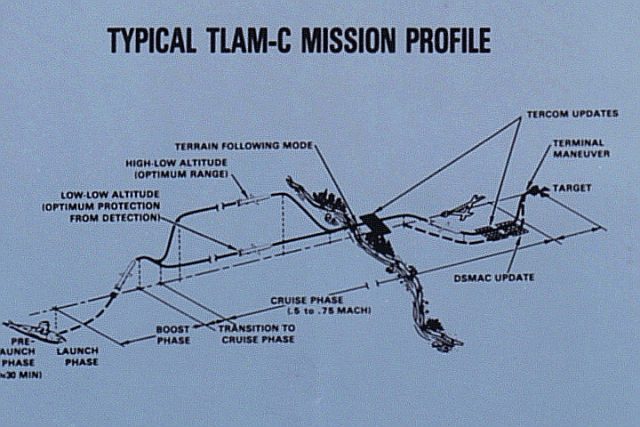IAFM - Next Generation Cruise Missile (NGCM)

Much focus today is on hypersonic and ballistic, long-range munitions. However there is still a significant need for a large number of boring, subsonic cruise missiles, especially to fill VLS cells. The Tomahawk cruise missile has performed well in this role, but it's getting long in the tooth. It has three major shortcomings,
- It has no RCS shaping to speak of, which makes it vulnerable to enemy IADS.
- It doesn't have sufficient range to allow ships to operate in "safe" waters when an enemy has a extensive A2AD system and hold at risk more depth of enemy territory.
- It only carries a 1,000lb warhead. This limits its ability to strike hardened and deeply buried targets, as well as large infrastructure targets like bridges. (which can require 10 or more 2,000lb class warheads)
- Fits in a Mk57 VLS cell
- Carries either a Mk84 or BLU 109/137, 2,000lb-class warhead.
- 1,200+ nmi range.
- VLO, using stealth shaping and materials (ala JASSM)
- Ideally makes use of technology from JASSM/LRASM/Tomahawk (don't reinvent the wheel)
Mk 57 VLS
Mk41 rough estimates
4-cell Mk57 PVLS Module
Length: (14.2 ft / 4,33 m)
Height: (26 ft / 7,93 m)
Weight: (33600 lb / 15240 kg)
Max. canister width: (28 in / 0,71 m)
Max. canister length: (283 in / 7,18 m)
Max. encanistered weight: (9020 lb / 4091 kg)
Mk84 & BLU 109/137 warheads
Lethality Effects Mk84 (depend on HE charge type)
| FRAGMENTATION | CRATERING | ||
| Grains | 4 to 3000 | Diameter | 7.6 m to 18.3 m |
| Velocity | 610 m/s to 2745 m/s | Depth | 1.22 m to 8.84 m |
| BLAST | PENETRATION | ||
| Pressure at 50 ft (16 m) | 35 psi | Steel Armor Plate | 51 mm |
| Pressure at 100 ft (31 m) | 11.5 psi | Concrete 3000 psi (beton) | 884 mm |
Range
The current TLAM-E is estimated to have a range of around 900 nmi. The NGCM requirement increases that by 33% to 1,200 nmi. This allows ships carrying NGCM to either stand off further from the enemy coast, or reach deeper into their territory. To gain this extra range, NGCM will make use of the following techniques:
1. Owing to its VLO airframe, it doesn't always have to fly the Hi-Lo flight profile as shown below. Instead it can fly Hi-Hi all the way, where the jet engine and airframe are far more efficient.

2. A more efficient airframe and engine.
Back in 2006, Lockheed Martin started a company-funded effort for what they called the "Cruise Missile XR",
Known as the Cruise Missile Extended Range (XR), the company-funded concept entails a stealthy, 5,000 pound-class weapon that can fly out to 1,000 nautical miles to deliver a lethal payload up to 2,000 pounds precisely on target, said Ed Whalen, director of Strike Weapons Business Development for Lockheed Martin Missiles and Fire Control.
This is broadly in line with my requirements, with only a 200nmi shortfall. 14 years of materials and engine development since then might be able to push it the rest of the way.
With a ~1,000lb booster, and a ~3,000lb canister, that would fit within the max encanistered weight for the Mk57.
A smaller 1,000lb warhead variant might be developed with even greater range, to hit even deeper targets.
VLO and JASSM technologies
JASSM was designed to be stealthy. NGCM would continue with this capability. VLO greatly improves its survivability when flying through advanced IADS.
In addition, both JASSM and it's anti-ship derivative LRASM have guidance, and seeker technologies that can be more or less lifted for NGCM. Tomahawk has SATCOM networking, GPS-less, terrain matching guidance, and the forthcoming Maritime Strike variant has a radar seeker. Any or all could also be incorporated. It would be nice if all NGCMs were both land attack and maritime strike missiles, but there may be a need to develop different variants.





Comments